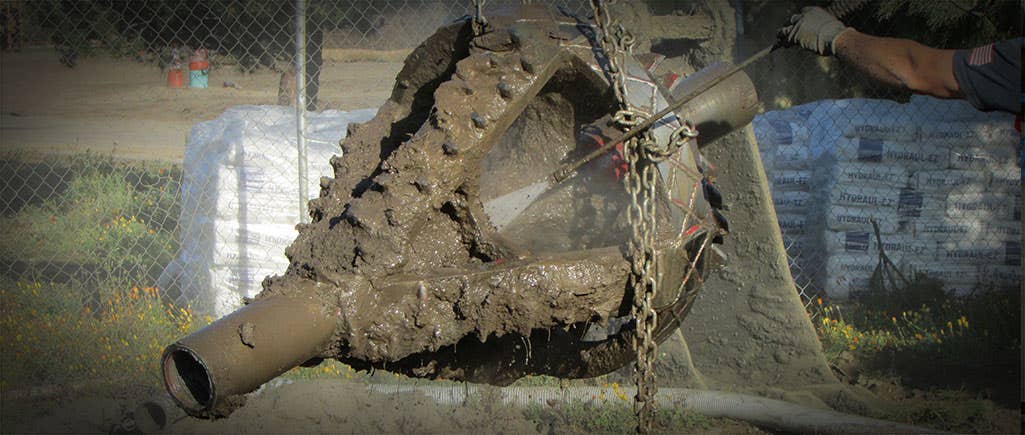
When you are drilling a big hole–around 18” or larger–you must pay close attention to the tooling and processes you use. Otherwise, you could end up with a misshapen, unstable hole that can interrupt other underground utilities, collapse in the middle of your project, or even cause loss of tooling. Whether you have a drill rig with enough power to make a big hole, or you’re aiming to bore a big hole with the rig you have, taking shortcuts could result in drilling an egg-shaped hole rather than the ideal circular hole. Depending on the soil conditions and distance you cover, your final hole depth can vary from a few inches to a depth that is off by feet. 
Backreamers can sink, leaving oval-shaped holes
As HDD tooling experts, we understand how to drill a hole the right way. Follow these steps to protect your equipment and maintain your productivity.
CHECK YOUR GROUND CONDITIONS
With all the different types of reamers on the market, always use the correct backreamer for your soil conditions. Softer ground conditions require proceeding with caution because your reamer can sink without your knowledge. Consider using a stabilizing barrel sooner rather than later if the ground is very soft and unstable. For harder conditions, make sure you use a reamer that is actually cutting and not just displacing material, otherwise, you could end up with a speed bump or damage to your tooling.
STABILIZE YOUR REAMER IN THE HOLE
Backreamers must be held steady and centered in the hole, otherwise, they will tend to sink under their own weight. Barrel stabilizer reamers are designed to fit just inside the size hole you have previously cut to make sure that your reamer proceeds perpendicularly to your hole (centered), not at a slope. 
Unstabilized reamers chew downward through an uneven passage

Barrel stabilizer reamers clear and maintain an even opening during pullback
USE THE RIGHT DRILLING FLUID RECIPE AND DON’T RUSH YOUR JOB
Pay attention to the amount of soil you must remove from the hole to ensure that you use enough drilling fluid and proceed slowly enough to flush your cuttings out as you proceed. However, it is not just about the amount of fluid. Although that is a part of having the right mix, it is more comprehensively about mixing the right amount of various types of drilling fluid to make sure that the viscosity and flow is enough to carry cuttings out of the hole. If you’re cutting a big hole, you’ll need to remove a large volume of soil. Pullback too fast, or don’t pump enough fluid into the hole, and the time you thought you were saving could end up in a failed pullback altogether. These factors will vary based on soil conditions, hole size, and distance of bore. Speak with our team of HDD tooling experts to determine the amount of drilling fluid you will need before you begin your job.
CONSIDER THE SIZE OF YOUR DRILL RIG
If you’re trying to cut a hole that is bigger than your rig is designed for, we recommend conducting multiple ream operations that increase in size. With the different types of drills, the bigger machines can do passes with incrementally larger drilling reamers, but smaller machines require stepping up gradually. You will have to drill the same hole several times, so it’s even more important that you use a stabilizing barrel in front of each cutting reamer. However, the result will be a clean and stable hole at a depth you can control. If you keep drilling egg-shaped holes or experience frequent collapses or settling, call our team of HDD tooling experts. We’ll discuss the ground conditions, tooling needs and drilling fluid requirements that allow you to maximize your efficiency during your big hole drilling operation.

